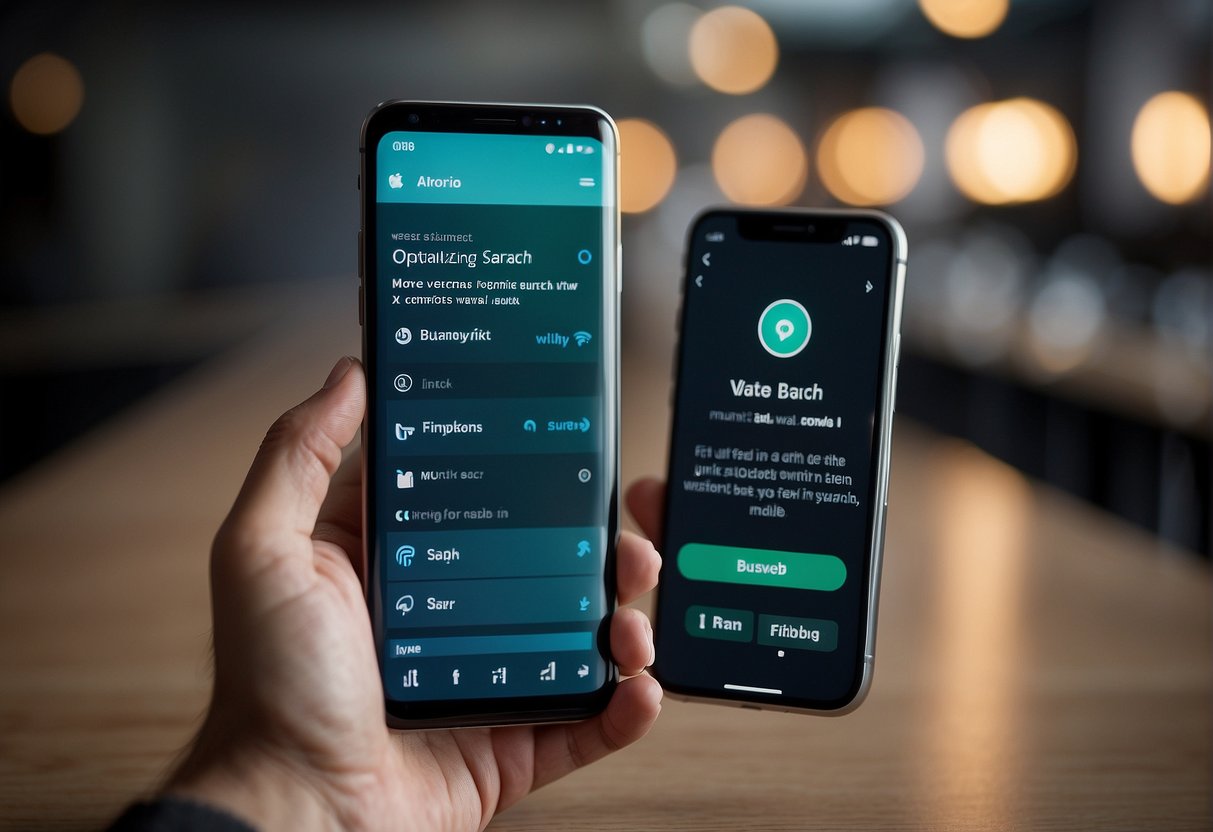As voice search technology continues to grow in popularity, businesses must adapt their content strategy to remain competitive.
With more people using their mobile devices to conduct voice searches, it is crucial for businesses to optimize their mobile content for voice search queries.
By doing so, businesses can improve their search engine ranking and enhance user experience.
Understanding the basics of voice search technology is the first step in optimizing mobile content for voice search queries.
Voice search queries are typically conversational and question-based, mirroring natural speech patterns. This means that businesses must incorporate questions that their target audience might ask into their content.
Additionally, long-tail keywords should be used to optimize content for voice search.
Common phrases that people use in conversations should be used when creating content that is optimized for voice search.
Creating voice search-friendly content is another crucial aspect of optimizing mobile content for voice search queries.
Businesses should structure their content strategy for voice search to enhance user experience and search engine ranking.
A conversational tone and question-based content should be used to match the natural speech patterns of voice search queries.
Additionally, businesses should ensure that their content loads quickly and is mobile-friendly to improve their search engine ranking.
Key Takeaways
- Understanding the basics of voice search technology is crucial for optimizing mobile content for voice search queries.
- Creating voice search-friendly content that matches the natural speech patterns of voice search queries is essential.
- Optimizing mobile content for voice search queries requires businesses to incorporate long-tail keywords and ensure that their content loads quickly and is mobile-friendly.
Understanding Voice Search Technology

Voice search technology has revolutionized the way people interact with their devices. It has become increasingly popular in recent years, and its impact on SEO cannot be ignored.
In this section, we will explore the evolution of voice assistants and AI, as well as the impact of voice search on SEO.
Evolution of Voice Assistants and AI
Voice assistants have come a long way since their inception.
The first voice assistant was introduced in 2011, and since then, they have evolved to become more sophisticated and intelligent.
Today, voice assistants use natural language processing (NLP) and artificial intelligence (AI) to understand and respond to user queries.
NLP is a branch of AI that enables computers to understand human language. It allows voice assistants to interpret user queries and provide relevant responses.
AI, on the other hand, enables voice assistants to learn from past interactions and improve their responses over time.
The Impact of Voice Search on SEO
The rise of voice search has had a significant impact on SEO.
With more people using voice search to find information, it is important to optimize your content for voice search queries.
This means using natural language and question-based keywords in your content.
Voice search also has implications for local SEO.
Since many voice searches are location-based, it is important to ensure that your business is listed accurately on local directories and search engines.
Optimizing for Mobile Voice Search

Mobile voice search is quickly becoming a popular way for users to search for information.
As such, it is important for businesses to optimize their mobile content for voice search queries.
Here are some tips to help you structure your mobile content for voice search queries.
Mobile-Friendly Website Essentials
Having a mobile-friendly website is essential for optimizing your mobile content for voice search queries.
This means that your website should be designed to be responsive, meaning it adapts to the size of the user’s screen.
A mobile-friendly website will ensure that users have a good experience when using voice search on their mobile devices.
Voice Search Optimization Strategies
To optimize your mobile content for voice search queries, you should focus on long-tail keywords and conversational tone.
This means that you should use natural language and common phrases that people use in conversations.
Additionally, you can use structured data and schema markup to help search engines understand your content better.
Local SEO and Voice Search
Local SEO is important for optimizing your mobile content for voice search queries.
This means that you should optimize your Google My Business listing and ensure that your website has accurate and up-to-date information about your business.
This will help users find your business when they use voice search to search for local businesses.
Creating Voice Search Friendly Content
When it comes to optimizing your mobile content for voice search queries, creating voice search friendly content is crucial.
Keyword Research for Voice Search
One of the most important steps in creating voice search friendly content is conducting keyword research for voice search.
This involves identifying and targeting long-tail keywords that are more likely to be used in conversational search queries.
Keyword research tools such as Google Keyword Planner, SEMrush, and Ahrefs can help content creators identify relevant question-based keywords.
Crafting Content for Conversational Queries
Crafting content for conversational queries involves using natural language and a conversational tone to provide relevant content that answers user questions.
This means creating content that mirrors how people speak and using conversational language to engage with users.
Utilizing FAQs and Featured Snippets
Utilizing FAQs and featured snippets can also help optimize your content for voice search.
By creating an FAQ page and optimizing it for question-based keywords, you can provide relevant answers to common user questions.
Featured snippets, on the other hand, can help your content appear at the top of search results and provide users with a quick answer to their query.
Measuring and Enhancing Voice Search Performance

Voice search optimization is a crucial aspect of search engine optimization (SEO) that can help businesses achieve higher visibility and increased traffic. However, optimizing for voice search requires a different approach than traditional text-based search.
In this section, we will discuss how to measure and enhance voice search performance to ensure that your content is optimized for voice search queries.
Analyzing Voice Search Traffic and Trends
To measure the performance of your voice search optimization efforts, it is essential to analyze your voice search traffic and trends.
This can be done using tools such as Google Analytics, which can provide insights into the number of voice search queries your website receives, the keywords used in these queries, and the pages that receive the most voice search traffic.
By analyzing this data, you can identify trends and patterns in voice search queries and adjust your content accordingly.
For example, if you notice that a particular page on your website receives a high volume of voice search traffic, you can optimize the content on that page to better answer the queries.
Improving User Engagement and Conversion Rates
In addition to analyzing voice search traffic and trends, it is also important to focus on improving user engagement and conversion rates.
Voice search queries tend to be more conversational and longer than traditional text-based queries, which means that your content needs to be optimized to provide direct answers to these queries.
One way to improve engagement and conversion rates is to provide direct answers to commonly asked questions in your content. This can help your content appear in direct answer boxes, which are featured prominently in search results and can increase visibility and traffic to your website.
Another way to improve user engagement and conversion rates is to ensure that your website is optimized for mobile devices.
Voice searches are often conducted on smartphones, which means that your website needs to be accessible and easy to navigate on these devices.



